Good News: We Have Obtained The Clearest Ever Image Of A Black Hole!

Good news: We have obtained the clearest ever image of a black hole!
Bad news: The Sun is gone.
More Posts from Ad-astra-affecte-spe and Others


Brothers Betelgeuse and Rigel
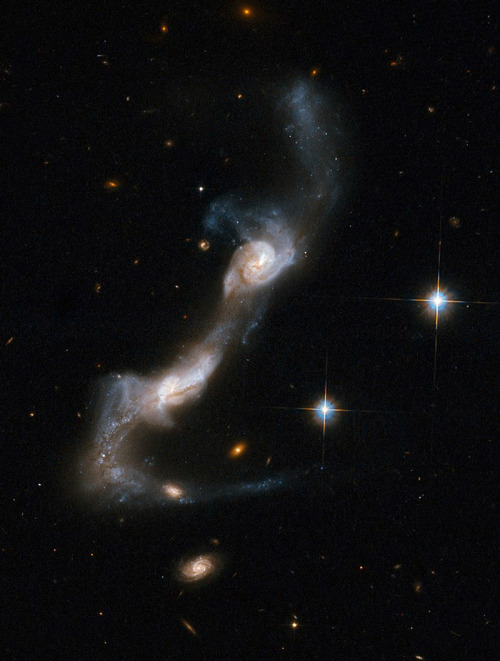
Cosmic Dance of Spiral Galaxies: Arp 238

The monsters that live on the Sun are not like us. They are larger than the Earth and made of gas hotter than in any teapot. They have no eyes, but at times, many tentacles. They float. Usually, they slowly change shape and just fade back onto the Sun over about a month. Sometimes, though, they suddenly explode and unleash energetic particles into the Solar System that can attack the Earth. Pictured is a huge solar prominence imaged almost two weeks ago in the light of hydrogen. Captured by a small telescope in Gilbert, Arizona, USA, the monsteresque plume of gas was held aloft by the ever-present but ever-changing magnetic field near the surface of the Sun. Our active Sun continues to show an unusually high number of prominences, filaments, sunspots, and large active regions as solar maximum approaches in 2025.

Eruption of Tvashtar volcano on Jupiter's moon Io (March 1, 2007)

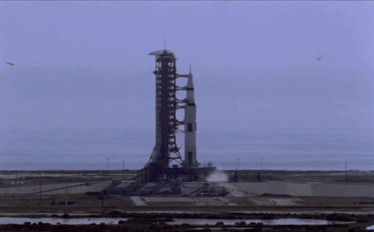
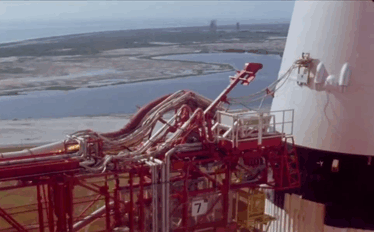
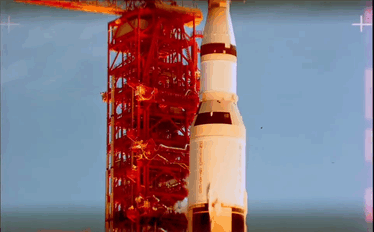
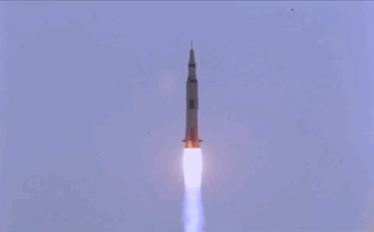
Apollo 11 Launch

Corona Australis
Nebula is mostly hydrogen gas, and a small amount of metals (elements above helium) which tend to be covered as "Dust", but it's the dust that best reflect the light of the stars, and as the largest and most energetic of them are blue, you get these areas of blue haze. Hydrogen more often glows red when bombarded by UV light, the two colours together quite magical.

The area has a number of NGC objects 6726,6727,6729 but born of the same huge molecular cloud.
Our Milky Way has many such areas full of star birth, and as blue giants are not long lived, supernova and star death too.

Saturn. American Tract Society Almanac. 1860.
Internet Archive

M42, Great Orion

2023 February 25
Crescent Moon Occultation Image Credit & Copyright: Fefo Bouvier
Explanation: On February 22, a young Moon shared the western sky at sunset with bright planets Venus and Jupiter along the ecliptic plane. The beautiful celestial conjunction was visible around planet Earth. But from some locations Jupiter hid for a while, occulted by the crescent lunar disk. The Solar System’s ruling gas giant was captured here just before it disappeared behind the the Moon’s dark edge, seen over the RÃo de la Plata at Colonia del Sacramento, Uruguay. In the serene river and skyscape Venus is not so shy, shining brightly closer to the horizon through the fading twilight. Next week Venus and Jupiter will appear even closer in your evening sky.
∞ Source: apod.nasa.gov/apod/ap230225.html
-
 quakerboi liked this · 2 weeks ago
quakerboi liked this · 2 weeks ago -
 mistereaten reblogged this · 2 weeks ago
mistereaten reblogged this · 2 weeks ago -
 nutzo0001 liked this · 4 weeks ago
nutzo0001 liked this · 4 weeks ago -
 nezumithewriter liked this · 1 month ago
nezumithewriter liked this · 1 month ago -
 flame-cat liked this · 1 month ago
flame-cat liked this · 1 month ago -
 palaeophis liked this · 1 month ago
palaeophis liked this · 1 month ago -
 pumpjin liked this · 1 month ago
pumpjin liked this · 1 month ago -
 orgueilgula liked this · 2 months ago
orgueilgula liked this · 2 months ago -
 standard-human liked this · 2 months ago
standard-human liked this · 2 months ago -
 acybun liked this · 2 months ago
acybun liked this · 2 months ago -
 kassiaactuallydraws liked this · 2 months ago
kassiaactuallydraws liked this · 2 months ago -
 ross-stories liked this · 3 months ago
ross-stories liked this · 3 months ago -
 catboy-yuri liked this · 3 months ago
catboy-yuri liked this · 3 months ago -
 panicatthedisso liked this · 3 months ago
panicatthedisso liked this · 3 months ago -
 theixwyn liked this · 4 months ago
theixwyn liked this · 4 months ago -
 summoner227 liked this · 4 months ago
summoner227 liked this · 4 months ago -
 droppyeyes liked this · 4 months ago
droppyeyes liked this · 4 months ago -
 darkdaemon reblogged this · 5 months ago
darkdaemon reblogged this · 5 months ago -
 darkdaemon liked this · 5 months ago
darkdaemon liked this · 5 months ago -
 nightwirevibe reblogged this · 5 months ago
nightwirevibe reblogged this · 5 months ago -
 ace-of-digiorno reblogged this · 6 months ago
ace-of-digiorno reblogged this · 6 months ago -
 thespacecaseace liked this · 6 months ago
thespacecaseace liked this · 6 months ago -
 queer-things-and-stuff reblogged this · 6 months ago
queer-things-and-stuff reblogged this · 6 months ago -
 queer-things-and-stuff liked this · 6 months ago
queer-things-and-stuff liked this · 6 months ago -
 bhen2 reblogged this · 6 months ago
bhen2 reblogged this · 6 months ago -
 girlwiththegreenhat reblogged this · 6 months ago
girlwiththegreenhat reblogged this · 6 months ago -
 retrocorvidae reblogged this · 6 months ago
retrocorvidae reblogged this · 6 months ago -
 guro-girlie reblogged this · 6 months ago
guro-girlie reblogged this · 6 months ago -
 sleepyoasis liked this · 7 months ago
sleepyoasis liked this · 7 months ago -
 forgottenbuggy liked this · 8 months ago
forgottenbuggy liked this · 8 months ago -
 mechagic liked this · 8 months ago
mechagic liked this · 8 months ago -
 princeobelisk liked this · 8 months ago
princeobelisk liked this · 8 months ago -
 tremendousardency reblogged this · 8 months ago
tremendousardency reblogged this · 8 months ago -
 tremendousardency liked this · 8 months ago
tremendousardency liked this · 8 months ago -
 lucklesslongshot reblogged this · 8 months ago
lucklesslongshot reblogged this · 8 months ago -
 theinsanemindblog liked this · 8 months ago
theinsanemindblog liked this · 8 months ago -
 kalliopii liked this · 8 months ago
kalliopii liked this · 8 months ago -
 wayfarerxiii reblogged this · 8 months ago
wayfarerxiii reblogged this · 8 months ago -
 littlest-arsonist reblogged this · 8 months ago
littlest-arsonist reblogged this · 8 months ago -
 littlest-arsonist liked this · 8 months ago
littlest-arsonist liked this · 8 months ago -
 drakiandh liked this · 8 months ago
drakiandh liked this · 8 months ago -
 birdkittenn reblogged this · 8 months ago
birdkittenn reblogged this · 8 months ago -
 avedr liked this · 8 months ago
avedr liked this · 8 months ago -
 kaysspamblog liked this · 9 months ago
kaysspamblog liked this · 9 months ago -
 lore-gore liked this · 9 months ago
lore-gore liked this · 9 months ago -
 raikkappa23 liked this · 9 months ago
raikkappa23 liked this · 9 months ago -
 safijiira liked this · 9 months ago
safijiira liked this · 9 months ago -
 calibratedgallow liked this · 9 months ago
calibratedgallow liked this · 9 months ago

★•Astronomy, Physics, and Aerospace•★ Original and Reblogged Content curated by a NASA Solar System Ambassador
204 posts
